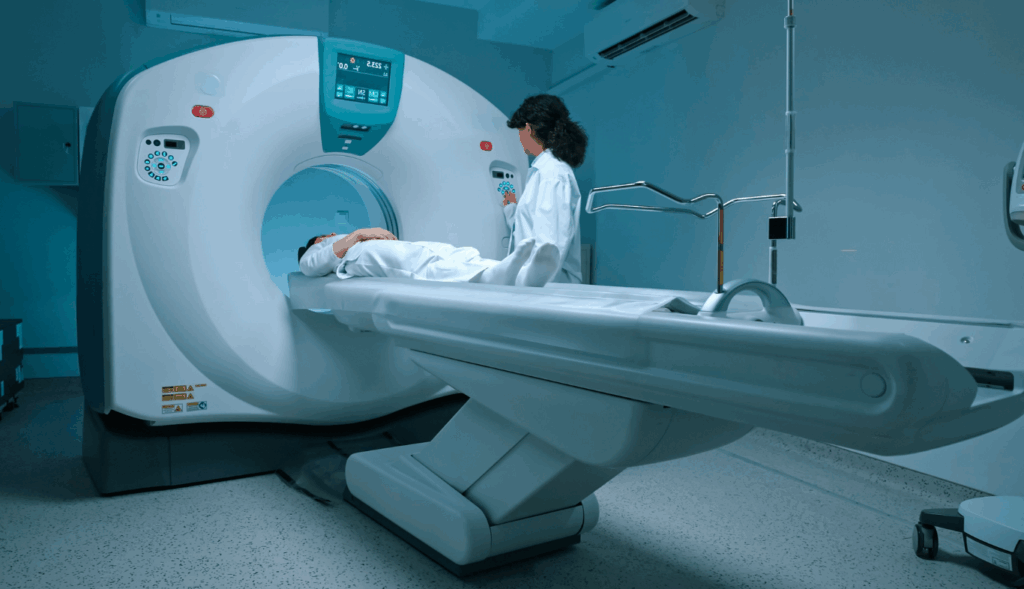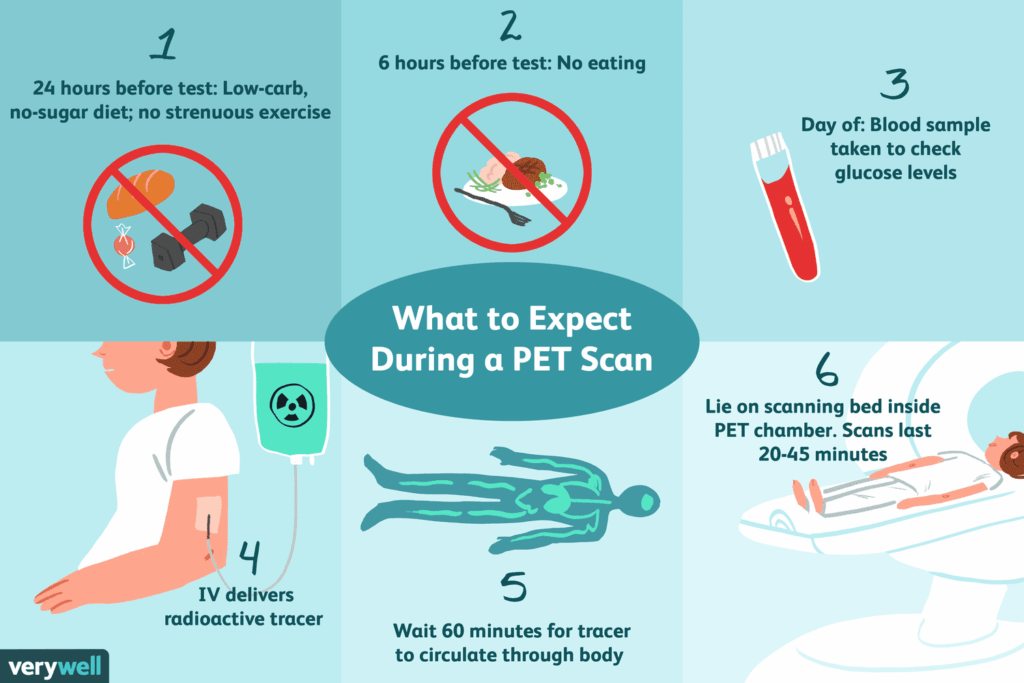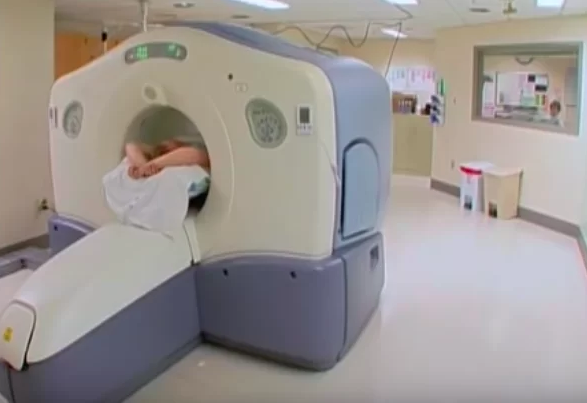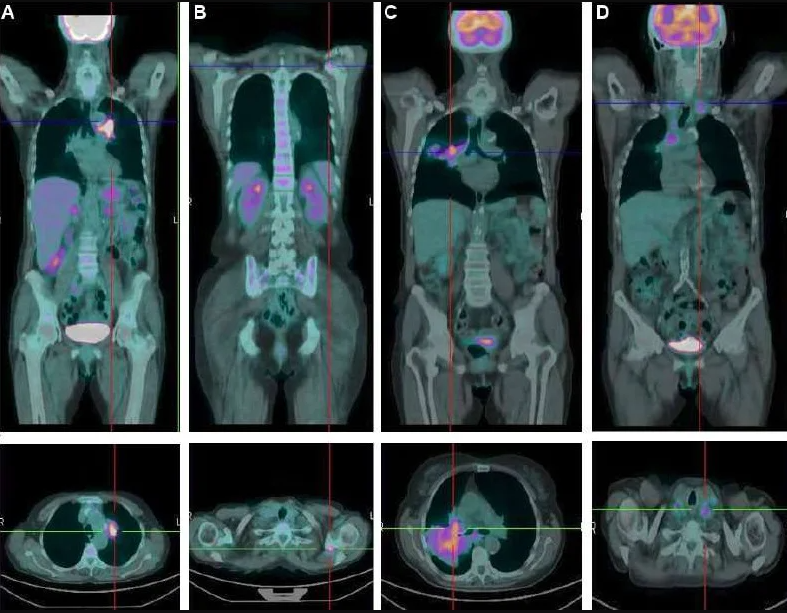Getting told you need a PET scan can feel overwhelming. Between medical jargon and uncertainty about what happens during the test, it’s normal to have questions. I’ve put together this guide to help you through everything, from what exactly this imaging test is to how long you’ll be at the medical facility.

What Is a PET Scan?
A PET (Positron Emission Tomography) scan is an imaging test that shows how tissues and organs are functioning. Unlike X-rays or CT scans, which mainly show structure, PET scans reveal activity at the cellular level by tracking a special substance in your body.
Think of it like this: If your body were a city, an X-ray would show you the buildings, while a PET scan would show you where the lights are on and how much electricity is being used.
How Does It Work?
Before your scan, you’ll receive an injection of a radioactive sugar solution (called a tracer). Don’t worry—the radiation dose is small and temporary. Your cells naturally consume sugar for energy, but some cells (like cancer cells) are more active and consume more sugar than others.
The scanner detects where this tracer collects in your body, creating detailed images that show which areas have higher activity. These “hot spots” help doctors identify potential problems.
The Complete Timeline: How Long Does It All Take?
From walking through the door to heading home, here’s the typical timeline of how long does a pet scan take:
1. Arrival and Preparation (30-60 minutes)
- Checking in and paperwork
- Changing into a hospital gown
- Meeting with a technician to go over your medical history
- Having an IV line placed in your arm
2. Tracer Administration and Uptake Period (60-90 minutes)
- Receiving the radioactive tracer injection
- Waiting in a quiet, dimly lit room while the tracer circulates
- During this time, you’ll need to relax and limit movement
- You might be asked not to read or use your phone (to prevent extra brain activity if they’re scanning your head)
3. The Actual Scan (20-45 minutes)
- Lying on a narrow table that slides into a donut-shaped scanner
- Remaining very still while the machine works
- The technologist will be in another room but can see and hear you

4. Wrap-up (15-30 minutes)
- Brief observation to ensure you’re feeling well
- Removing the IV line
- Final instructions
Total time at the facility: 2-4 hours (though the actual scanning portion is under an hour)
Before Your PET Scan: Important Preparation Steps
Several Days Before:
- Tell your doctor about any medications you take
- Mention allergies, especially to contrast materials
- Inform them if you’re pregnant or breastfeeding
- Ask if you should continue taking regular medications
24-48 Hours Before:
- Follow dietary restrictions (typically a low-carb, no-sugar diet)
- Avoid strenuous exercise (which can affect results)
- Drink plenty of water
6-12 Hours Before:
- Fast (no food or drinks except water)
- Take only medications specifically approved by your doctor
- Avoid caffeine, alcohol, and tobacco
During the PET Scan: What to Expect
The Environment:
The scanning room houses a large machine with a hole in the middle (similar to a CT scanner). You’ll lie on a padded table that slides into this opening. The room might feel cool, and you’ll hear various mechanical sounds as the scanner works.
The Experience:
- Unlike MRIs, PET scanners aren’t as enclosed—many people who experience claustrophobia find PET scans more tolerable
- The machine makes clicking and whirring noises but isn’t painfully loud
- You’ll need to lie very still
- There’s no pain during the scanning itself
- Some people feel warmth spreading through their body when the tracer is injected

What to Wear:
Wear comfortable clothes without metal zippers or buttons. You’ll likely change into a hospital gown regardless.
After Your PET Scan
- You can typically resume normal activities immediately
- Drink plenty of water to help flush the tracer from your system
- The small amount of radioactive material will naturally leave your body within hours
- Your doctor might advise limiting close contact with pregnant women and small children for several hours as a precaution
When Will You Get Answers?
Unlike some medical tests with immediate results, PET scans take time to interpret. A specialized doctor (radiologist) needs to analyze the images carefully. Results are typically available within 1-3 business days.
Reading PET Scan Images:
PET scan images use color to show activity levels:
- Brighter areas (often shown in yellow or red) indicate higher metabolic activity
- Darker areas show less activity
- Both unusually high and unusually low activity can be significant
Remember that only trained medical professionals can accurately interpret these images. Don’t try to analyze them yourself.
What Findings Might Mean:
- Areas of unusually high activity might indicate cancer, infection, or inflammation
- Areas of unusually low activity might indicate damaged tissue or reduced blood flow
- Not all “hot spots” are cancer, and not all cancers create hot spots
When Are PET Scans Used?
PET scans help doctors in many situations:
- Finding cancer and determining if it has spread
- Checking how well cancer treatment is working
- Evaluating heart function and blood flow
- Identifying brain disorders like Alzheimer’s disease
- Locating areas causing seizures
- Detecting infection sites when other tests are inconclusive

Common Questions
Is the radiation dangerous?
The tracer emits about the same radiation you’d get from natural background sources over a year. The material disappears from your body within hours. The potential benefits of diagnosis far outweigh this small, temporary exposure.
Does insurance cover PET scans?
Most insurance plans cover PET scans when medically necessary, but you’ll likely need pre-approval. Check with your provider and ask about any out-of-pocket costs.
Is it painful?
Most people experience minimal discomfort—just a quick needle prick for the IV. The scan itself is painless.
Can I bring someone with me?
You can bring someone for emotional support, but they typically can’t stay in the scanning room. After receiving the radioactive tracer, you’ll need to keep some distance from others, particularly pregnant women and young children.
What if I’m claustrophobic?
Let your doctor know ahead of time. They might prescribe a mild sedative to help you relax, but many people find PET scanners less confining than MRI machines.
Should I be worried if my doctor ordered this test?
PET scans are powerful diagnostic tools, but having one doesn’t automatically mean something is seriously wrong. They’re often used to gather more information or to monitor existing conditions.
The Bottom Line
While spending several hours at the medical facility for a 30-minute scan might seem frustrating, each step serves an important purpose. The preparation time ensures accurate results, potentially saving you from additional tests down the road.
Remember that medical professionals perform these scans routinely and are there to support you through the process. Don’t hesitate to ask questions if anything remains unclear—understanding what’s happening often makes the experience less stressful.
